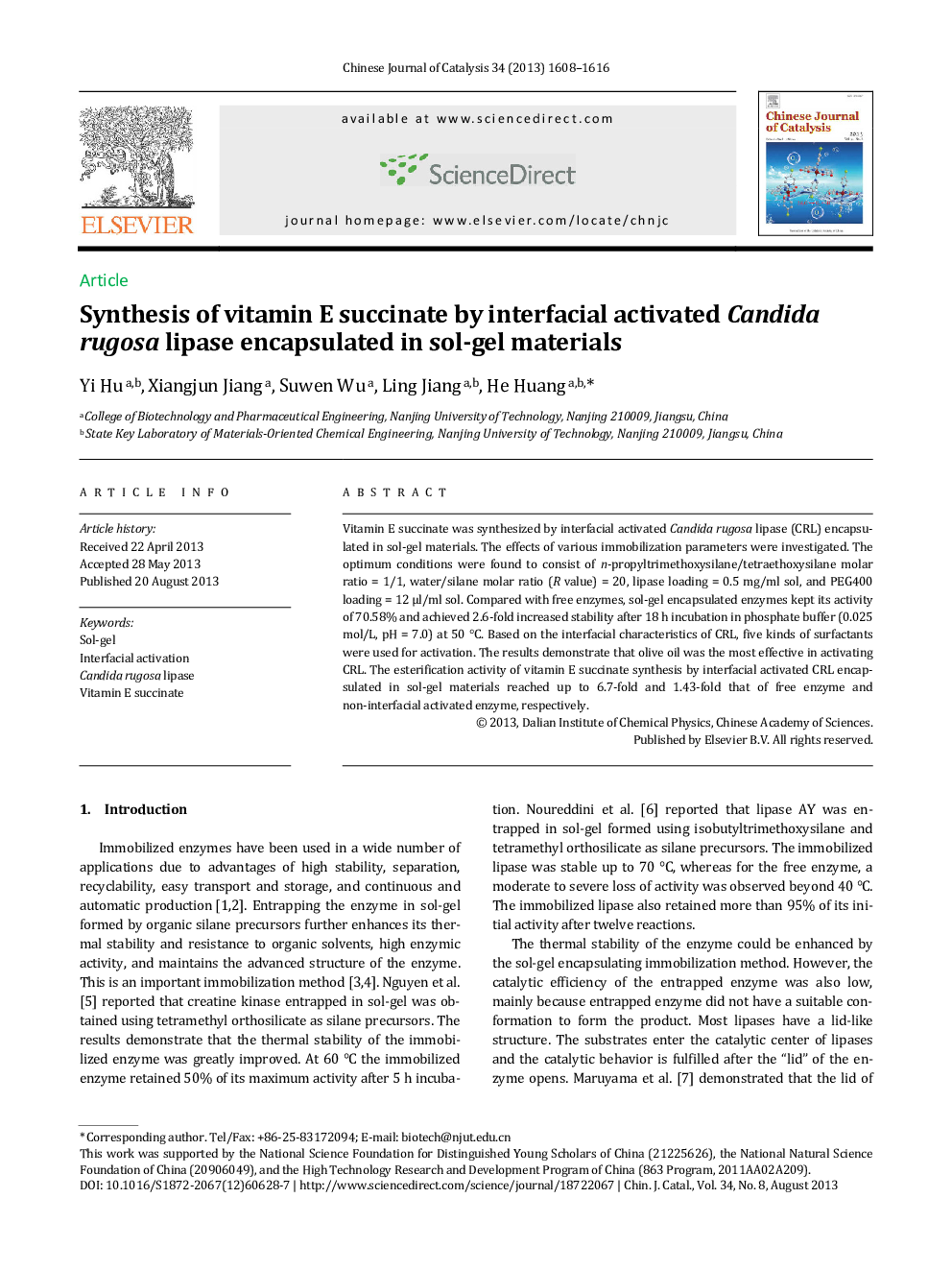| Article ID | Journal | Published Year | Pages | File Type |
|---|---|---|---|---|
| 59083 | Chinese Journal of Catalysis | 2013 | 9 Pages |
Vitamin E succinate was synthesized by interfacial activated Candida rugosa lipase (CRL) encapsulated in sol-gel materials. The effects of various immobilization parameters were investigated. The optimum conditions were found to consist of n-propyltrimethoxysilane/tetraethoxysilane molar ratio = 1/1, water/silane molar ratio (R value) = 20, lipase loading = 0.5 mg/ml sol, and PEG400 loading = 12 μl/ml sol. Compared with free enzymes, sol-gel encapsulated enzymes kept its activity of 70.58% and achieved 2.6-fold increased stability after 18 h incubation in phosphate buffer (0.025 mol/L, pH = 7.0) at 50 °C. Based on the interfacial characteristics of CRL, five kinds of surfactants were used for activation. The results demonstrate that olive oil was the most effective in activating CRL. The esterification activity of vitamin E succinate synthesis by interfacial activated CRL encapsulated in sol-gel materials reached up to 6.7-fold and 1.43-fold that of free enzyme and non-interfacial activated enzyme, respectively.
Graphical AbstractInterfacial activated Candida rugosa lipase encapsulated in sol-gel materials was prepared and used to synthesize vitamin E succinate.Figure optionsDownload full-size imageDownload as PowerPoint slide
